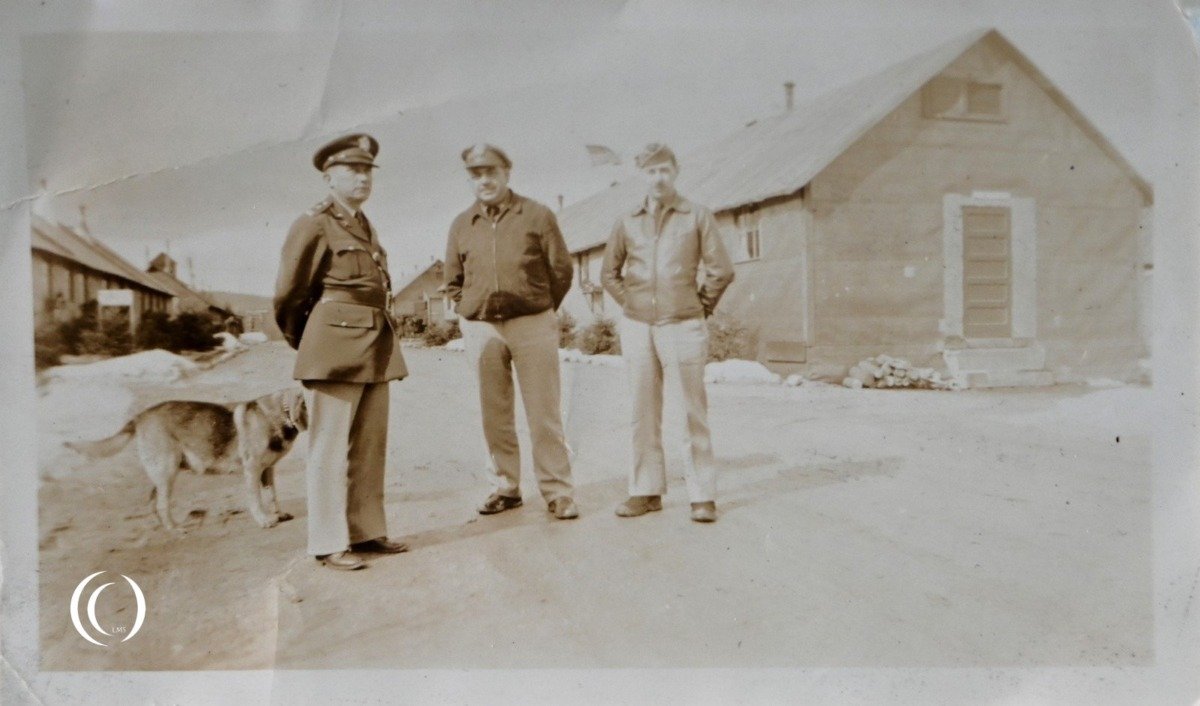
History of the 497th from the 344th Bomb Group
The 497th Bombardment Squadron was a unit of the 344th Bomb Group, part of the U.S. Army Air Forces during World War II. Equipped with the Martin B-26 Marauder, the squadron was activated in 1942 and deployed to Europe in early 1944, under the Ninth Air Force. The group moved to Britain in January-February 1944, where it joined the Ninth Air Force, the US contribution to the tactical air forces that would support the D-Day landings and the invasion of Europe.
Operating from RAF Stansted Mountfitchet England (now London Stansted Airport) and later from advanced bases in France and Belgium, the 497th flew tactical bombing missions against enemy infrastructure, transportation networks, and military targets. The group entered combat in March 1944. Its early targets included airfields, V-1 sites, transport lines and submarine shelters, across France, Belgium and Holland. In May efforts switched to pre-invasion attacks and the group hit bridges across France, isolating the Normandy battlefield.
On D-Day the group attacked German coastal gun batteries at Cherbourg. During June it supported the advance into the Cotentin Peninsula, and also helped support the British and Commonwealth forces around Caen. In July the group supported the US breakout around St. Lo and was awarded a Distinguished Unit Citation for its actions on 24, 25 and 26 July when it attacked German troops, supply dumps, a railway viaduct and a bridge. It then attacked bridges in an attempt to stop German troops escaping through the Falaise gap. In August and September it was also used to attack German strong points in the besieged port of Brest.
In October and November, as the Allies approached the German border, the group was used to attack bridges, rail lines and military supply dumps and depots. When the Germans launched their surprise attack in the Ardennes in December 1945 the group helped support the US ground troops during the Battle of the Bulge. After the end of that battle it returned to the attacks on transport links, with oil facilities added to the list as the German war economy was finally destroyed.
The group operated the B-26 throughout the war. It did begin to train with the A-26 Invader but never made the switch. After the end of the fighting the group moved to Germany, where it served with the Army of Occupation. The 344th group returned to the US on 15 February 1946 and was inactivated on 31 March.
The squadron earned a Distinguished Unit Citation for its precision strikes during July 1944, which were instrumental in breaking German lines near Saint-Lô. The 497th’s B-26 Marauders, known for their speed and resilience, often featured personalized nose art such as “Hard to Get” and “You’ve ’Ad It”.
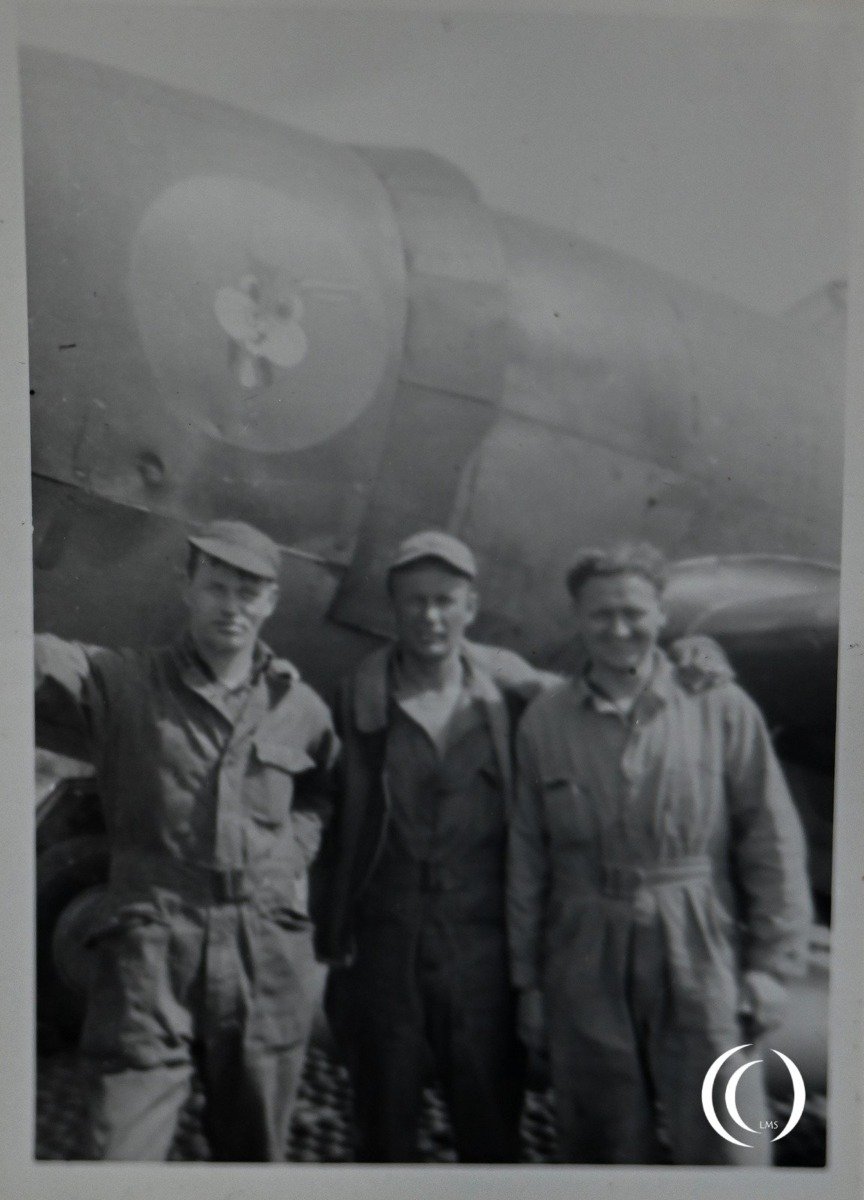
Operational Missions of the 344th Bombardment Group
The 344th Bombardment Group (Medium) was activated in September 1942 and deployed to the European Theater in early 1944 as part of the Ninth Air Force, flying the versatile Martin B‑26. A small list of operational missions;
- March–May 1944: Began combat operations targeting airfields, V-1 launch sites, marshalling yards, submarine pens, and coastal defenses across France, Belgium, and the Netherlands to disrupt enemy logistics, enemy airfields, transport, coastal defenses.
- May 1944: Struck vital bridges to isolate the Normandy region ahead of D-Day.
- D‑Day (6 June 1944): Attacked coastal batteries at Cherbourg; continued supporting operations through June by aiding allied advances in the Cotentin Peninsula and facilitating operations around Caen.
- July 1944: Distinguished Unit Citation (DUC). Awarded for actions during 24–26 July 1944, the group struck troop concentrations, supply dumps, bridges, and a railroad viaduct near Saint‑Lô, significantly aiding the Allied breakout. They also bombed bridges to impede German movement through the Falaise Pocket.
Further Campaigns:
- August–September 1944: Focused on strongpoints at Brest to support its siege and eventual fall.
- October–November 1944: Attacked enemy infrastructure—bridges, railways, fortified areas, supply dumps, and depots—as Allies advanced toward Germany.
- Battle of the Bulge (Dec 1944–Jan 1945): Provided crucial support to ground troops. Continued strategic strikes afterwards on logistics hubs, roads, communication centers, and fuel depots through April 1945.
Post-War Transition:
After hostilities ended, the group conducted training and demonstration flights before entering occupation duty in Germany in September 1945. Though they began training on the A‑26 Invader, the 344th continued flying B‑26s until their inactivation in March 1946.
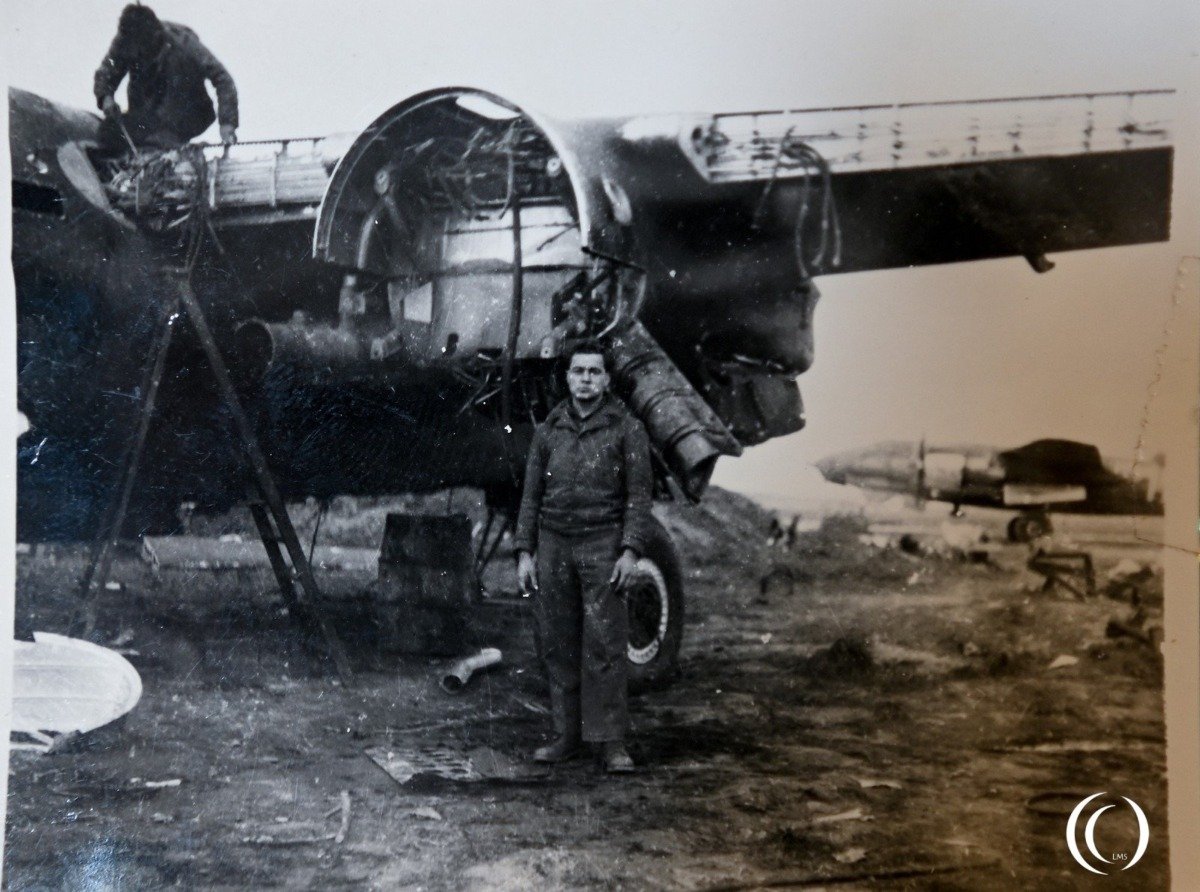
Given the intensity of combat missions, the B-26’s engines often needed to be overhauled or replaced. These engines were powerful but prone to wear and tear, especially with the aggressive flight profiles required for bombing missions.
497th Bombardment Squadron – B-26 Marauder
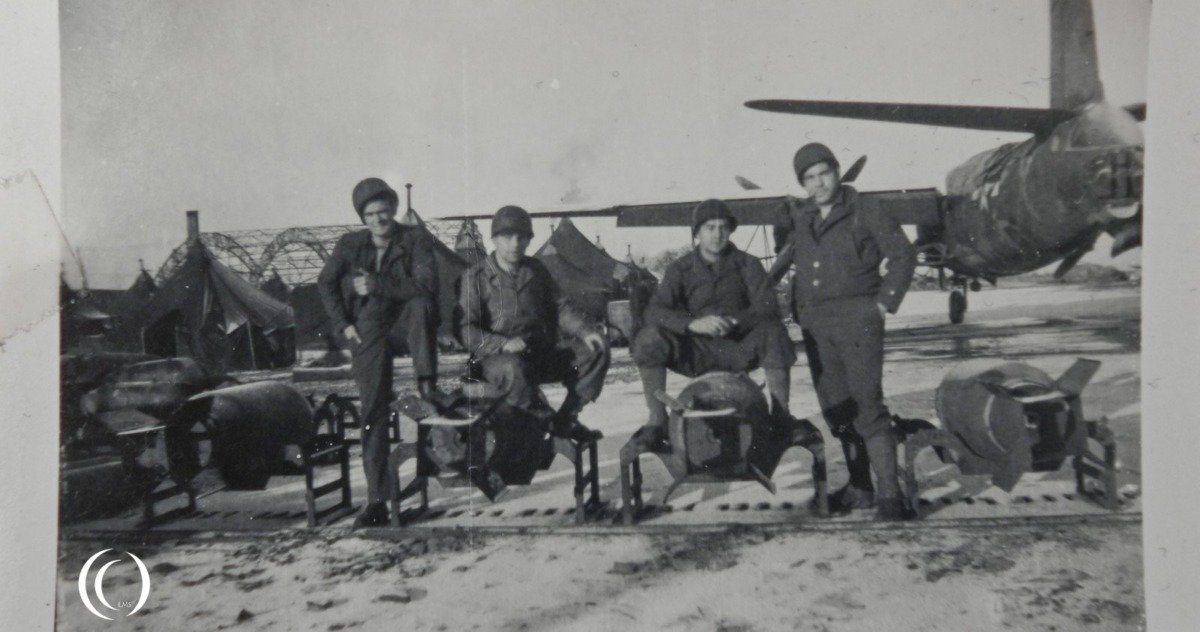
The Martin B-26 Marauder was an American twin-engine medium bomber used during World War II. Designed for speed and efficiency, it first flew in 1940 and was known for its sleek, streamlined fuselage. Early models earned a reputation for being difficult to fly, especially during takeoff and landing, but improvements made it a reliable aircraft. The B-26 served primarily in the European and Mediterranean theaters, performing bombing raids with precision and sustaining fewer losses over time. Crews appreciated its durability and speed. By war’s end, the B-26 had one of the lowest combat loss rates of any U.S. bomber aircraft.
The 344th Bombardment Group (B-26 Marauder) typically relied on fighter escorts for protection during bombing missions, especially over enemy territory where the risk of Luftwaffe interception was high. Given the B-26’s vulnerability in certain phases of the attack (takeoff, landing, and during daylight bombing), fighter support was critical to its success. Fighter Support for the 344th Bomb Group was given by The P-47 Thunderbolt, P-51 Mustang and the P-38 Lightning.
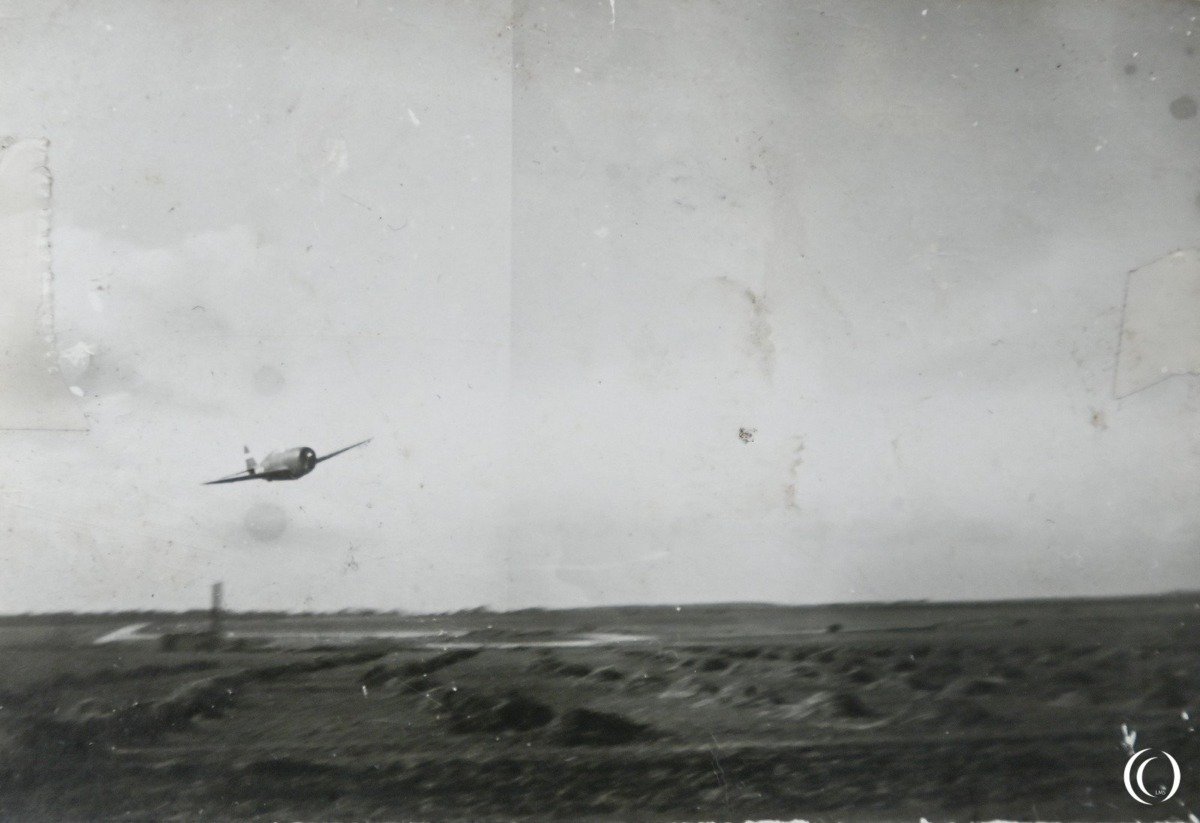
B‑26 Marauder Serial 42‑95903 – “Hard To Get”
B26 Serial 42-95903 was a B-26B-50-MA. It was accepted from the Martin Baltimore plant on the 29th November 1943 and assigned to the 344th BG before they departed to the combat theatre. It was originally delivered in a shiny natural metal finish, later camouflaged in olive drab on the upper and side surfaces, with grey-painted codes to match the applied schemes.
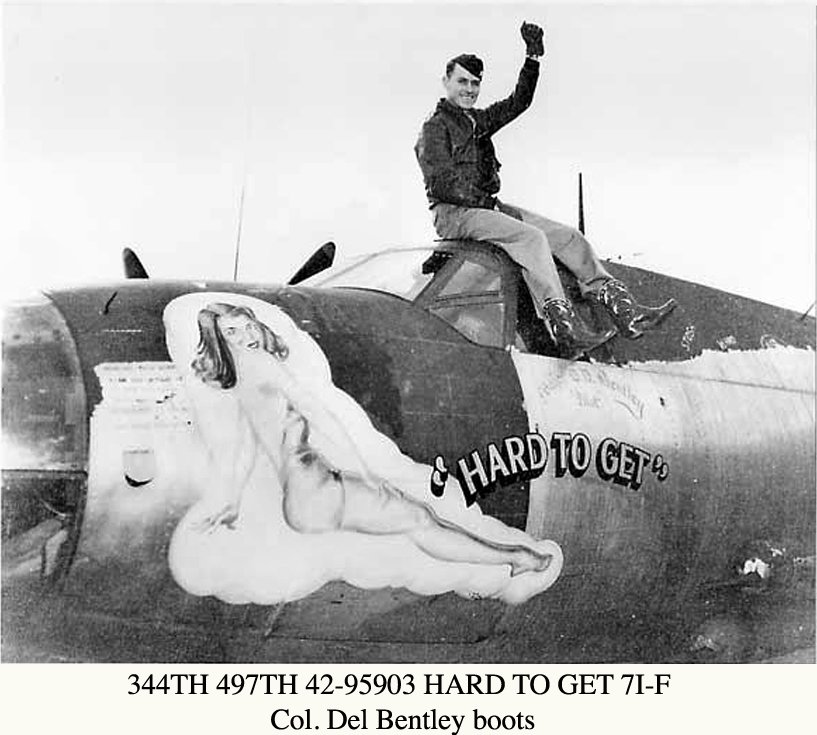

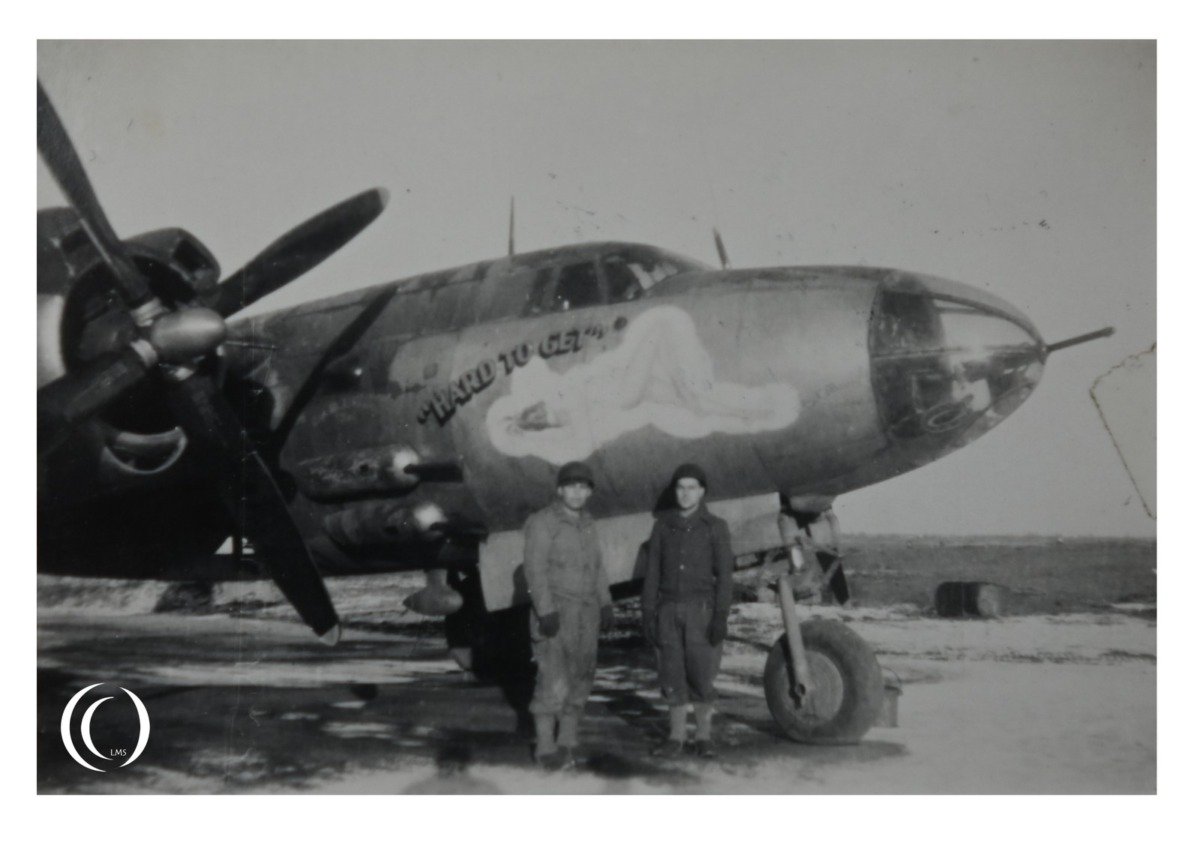
An interesting artifact of the group’s legacy is the B‑26 serial 42‑95903, nicknamed “Hard To Get”—painted by 497th Squadron commander Lt. Col. Delwin D. Bentley. Legend has it the aircraft earned this name because it was never downed by flak or enemy fighters during his command. Bentley earned the Distinguished Flying Cross for leading a mission that destroyed a critical German railway bridge. He was transferred to the 322nd Bomb Group in August 1944.
B‑26 Marauder Serial 42‑95952 – “You’ve ’Ad It”
This aircraft, serial 42‑95952, carried the nickname “You’ve ’Ad It” and featured elaborate nose art—a pin-up style motif—that was likely applied by Lt. Jack Havener, a pilot in the 497th Bomb Squadron of the 344th Bomb Group. The aircraft was stationed at Stansted, England, around July 1944. Interestingly, this aircraft was a composite fuselage and tail assembly made from two different Marauders: its nose bore the serial 42‑95952, while the tail section had the serial 295938.
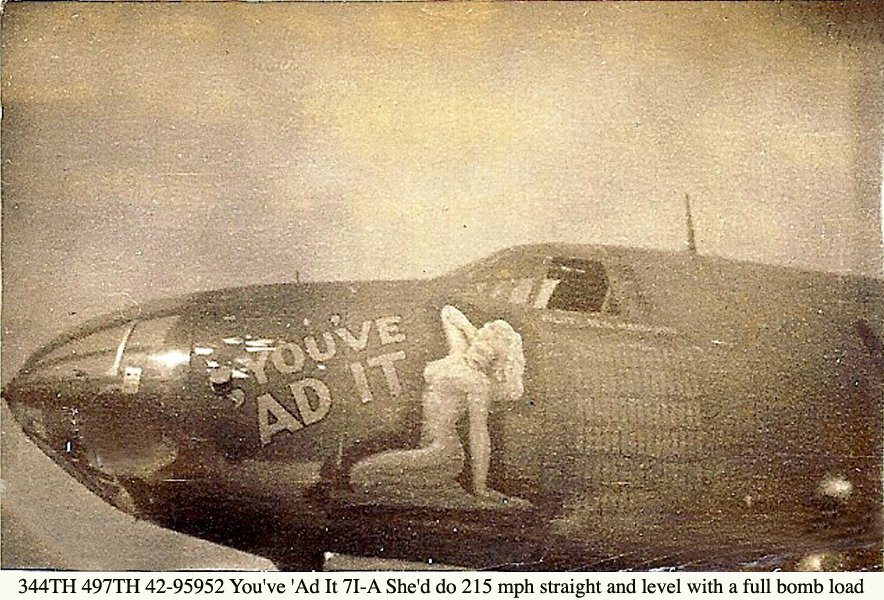

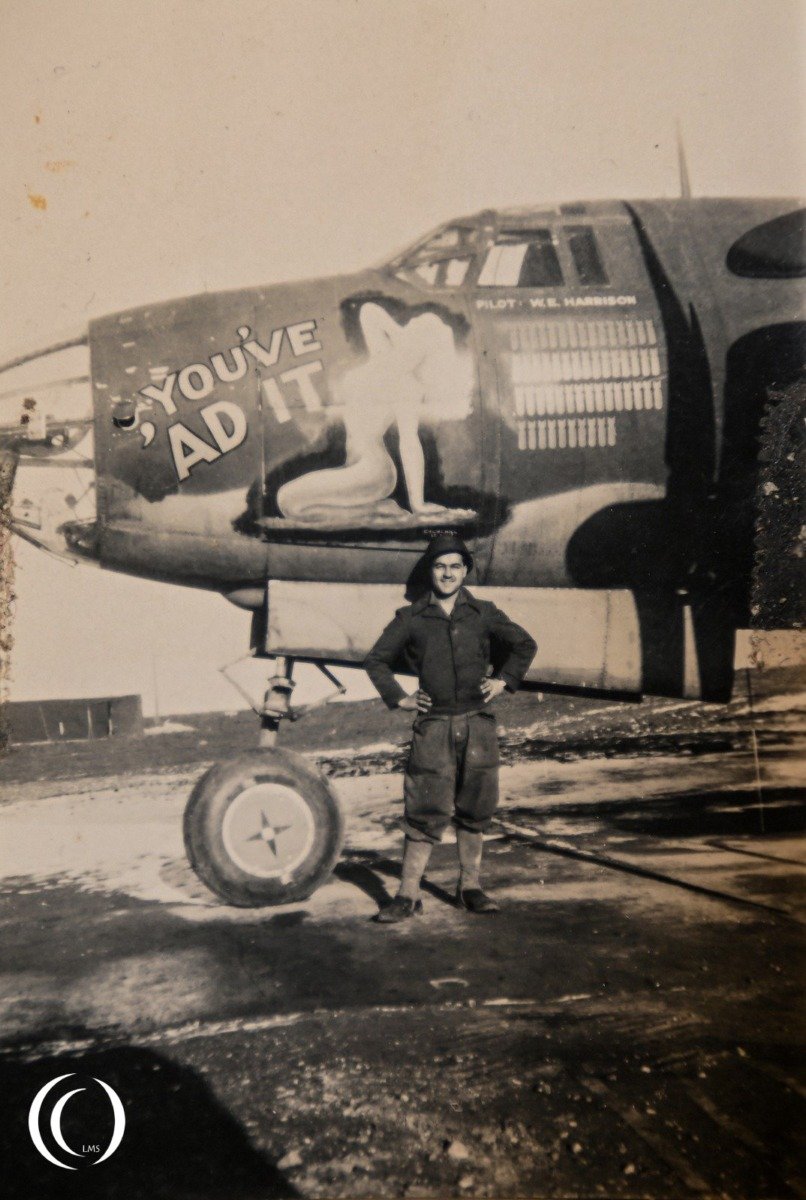
William C Cattell
On our photoset we find a man whose name is (probably) 1st Lt. A.C. William C Cattell. But it lacks any other information, like the date and location. It even could be that the name is misread, it could be William B Battell for instance. Any information on this soldier is welcome.
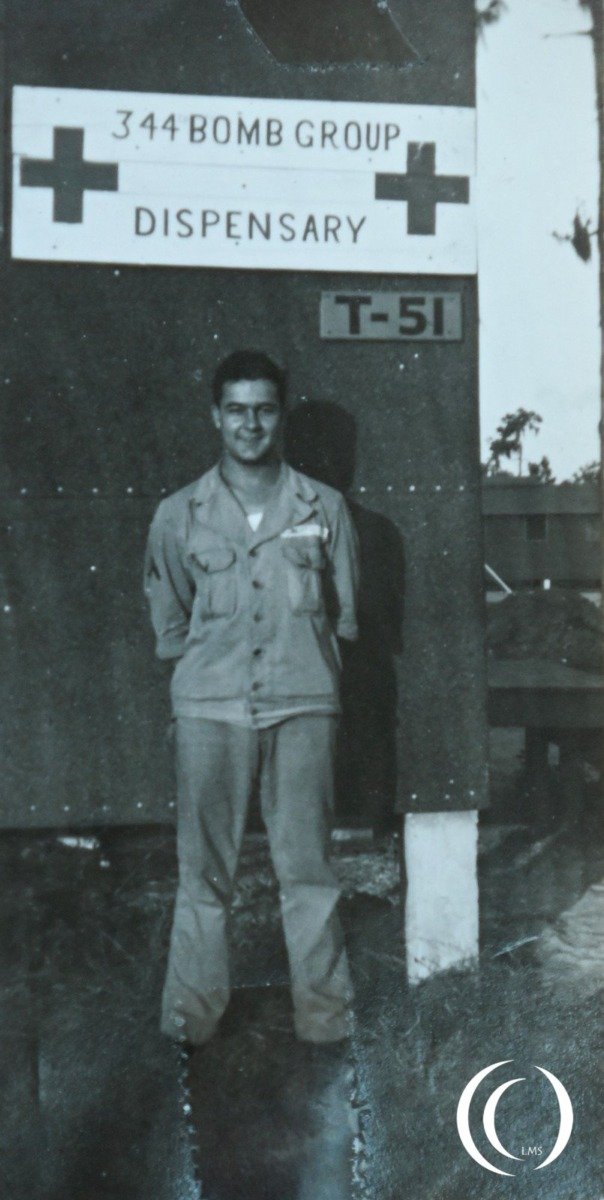

344th bomb group photoset
15 years ago LandmarkScout acquired some photos of the 344th bomb group and only recently received information on the two pin-up painted B-26 Marauders. So it was time to share them with our readers. There is no information of the location where these photographs were taken, or what date they were taken on except on the P47 Thunderbolt photo (5 May 1944).

remember the 497th Bombardment Squadron
This post is in remembrance of the 497th Bombardment Squadron of the 344th bomb group, Ninth Air Force, located at RAF Stansted Mountfitchet, England.
More information on the 497th and 344th can be found on the website of Shopworn Angel by following this link. Or see loads of photographs in the books of Robert Harwell, Pilot 344th Bomb Group, 497th Bomb Squadron.